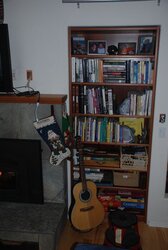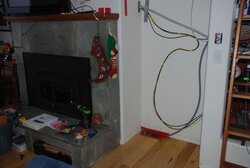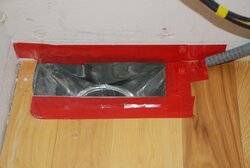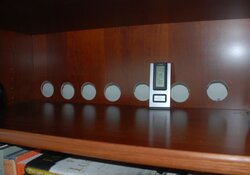VCBurner said:
pyper said:
I've only had my stove a few weeks. The room the stove is in easily gets to 80F while the rooms far away stay 55F. I've been considering putting a fan in the wall between the stove room and the remote room (they're actually adjacent) (can be done within existing ducts), but I don't really want to do that for noise reasons.
All I've been doing in the mean time is putting a fan on top of the entertainment center that directs hot air down the hallway. This doesn't seem to really work, but it's an improvement on the default situation.
My wife has vetoed cutting holes in the drywall in the new room.
"Try to putting a fan
on the floor of the cool room and direct it toward the warm room. A box fan works well. This will create negative pressure in the cold room and cause the warm air to replace the cold. I don't know the print of your house but this should even things out a bit."
It's kind of like this:
http://i97.photobucket.com/albums/l211/pyper_2006/home/plan.jpg
Not to scale, and some details omitted.
The red star is the stove, and the blue box is the return on the HVAC. The house is a big circle, so if I could pump warm air into the middle bedroom on the north wall it woud circulate through most of the house. I'm actually thinking of cutting into the back of the return and mounting a fan and a filter. It's just sheetmetal, so it would be an easy thing to undo. The only hesitation I have is that it might end up just pulling cold air out of the return.
I have experimented with putting the fan on the floor in the east-west hallway, as opposed to on top of the furniture. It seems to work about as well either way. I think maybe because when it's on the ceiling it's taking really hot air and moving it into the adjacent space, but when it's on the floor blowing in the air is mixing more and not-as hot air comes out through the opening. Also, when I put it on the floor, more heat goes into the southern space (the kitchen) but I really want to get it to the west and north.
I have tried running the HVAC fan-only; it makes the stove room cooler but doesn't seem to put any heat into the rest of the house. I think I'm loosing all the heat from the return into the crawl space. Although that seems to indicate I probably have another issue to address.





